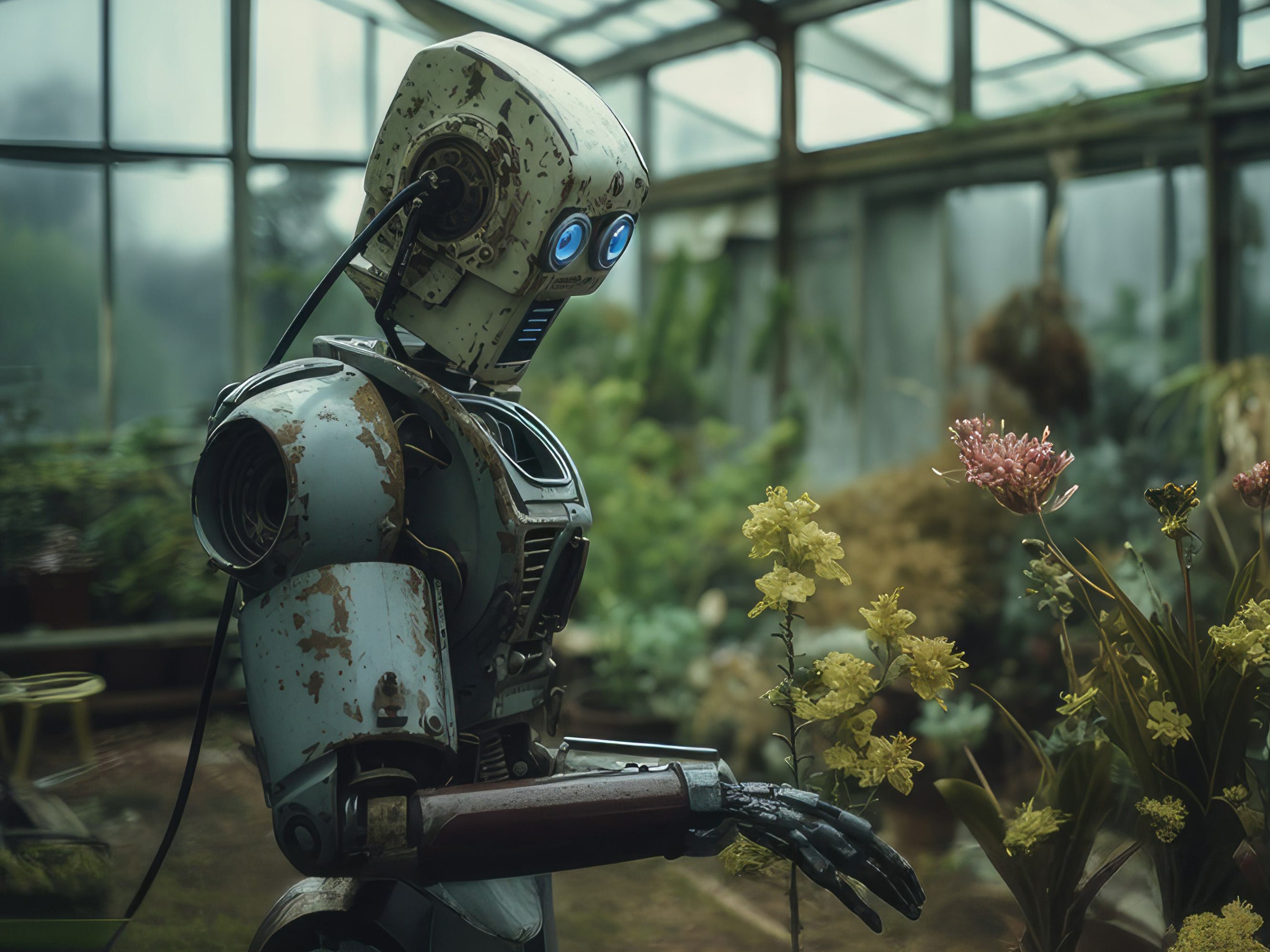
Aleem Hossain
This as-told-to essay is based on a conversation with Aleem Hossain, an associate professor of Media Arts & Culture at Occidental College. He’s also a filmmaker who recently created the short film, “Do Bangladroids Dream Of Electric Tagore?” This conversation has been edited for length and clarity.
I was a filmmaker before I became a professor.
I started making films in high school because I was deeply interested in telling stories that just weren’t being told. I gravitate toward the stories of underrepresented folks. My films are personal — and a bit vulnerable — so it’s not always easy to find funding.
Many of them are science fiction. There’s a long tradition of independent sci-fi, but it doesn’t get talked about much. It’s nowhere near as common as an independent comedy or realist drama. That’s because, quite literally, sci-fi is usually imagining the world differently from how it exists today, and it takes money and resources to do that.
I’ve made one feature-length film, and I’m working on a second right now. I’ve also made about 15 short films.
I’ve found ways to fund my creative pursuits, investing personal money, running Kickstarters, and convincing stakeholders to contribute. My first feature film cost about $30,000. I’ve made many of my short films for far less. “Do Bangladroids Dream of Electric Tagore” is my most recent short film, and it cost me just about $300.
A big reason for the low cost is because I used AI. I spent a bit on subscriptions to Midjourney, an AI image generator. I used a free version of a generative AI voice tool, ElevenLabs. I also hired a voice actor. That was pretty much it.
The film takes place 50 or so years in the future, somewhere in New Jersey. There are no humans. There’s been a failed robot uprising, and the robots that survive reflect on their memories of home by reciting the poems of Rabindranath Tagore, a Bengali writer.
The title is a direct reference to Philip K. Dick’s novel, “Do Androids Dream of Electric Sheep,” which was also the inspiration for the movie “Blade Runner.” Both of those pieces ask several interesting questions about our responsibilities to the robots we create.
They’re great, but those stories are largely told through a white male lens. I wanted to expand that.
I’m half South Asian, so I told a story set in that context. My dad is a Muslim immigrant from Bangladesh, and my mom is a white woman born and raised in Connecticut. I grew up watching Steven Spielberg and Bollywood, and I wanted to convey that experience through my film.
It’s a parallel to how we live our lives these days.
In this crazy, modern world, our ancestors can come from one part of the world, but we live in another. That’s also true of the items we buy, and the clothes we wear, which, oftentimes, and to the surprise of many Americans, are made in Bangladesh.
What if the equivalent were true, but for robots? This is a film that envisions a future in which our country is populated by robots from another country, brought here to serve — and what memories they carry of home.
It asks people to reflect on how they treat others. How we worry about being oppressed, but in fact, there are ways in which we might be the oppressor.
I took an AI filmmaking course from Curious Refuge, which helped me better prompt these tools. What’s interesting about prompting is that it’s just sort of churning. You’re pulling a slot machine over and over again. I generated thousands of robots to get the ones in the movie.
You have to experiment. Ask for a “robot-horse” in the style of Guillermo del Toro, then try Spielberg, and see which one you like better.
I used a mix of technical terms and descriptive verses in prompting. For example, I like the depth of field and spatial distortion of a 28-millimeter lens, so I often include “28-millimeter” in my prompts.
I think it’s a mistake for the critics of AI to say that one of the downsides of AI is that it can’t be used to make great art. I think this film is pretty good. I feel a deep sense of having authored it. I came up with the story and every frame.
Still, I don’t feel like I have the right to profit off of it.
This technology is clearly violating intellectual property. It poses a real danger of displacing and putting people out of work. It’s also exacerbating climate damage because of how energy-intensive it is.
I’m deeply conflicted about it.
See Hossain’s full movie below.
The post I’m a filmmaker who used AI to make a sci-fi film for under $300. I’m deeply conflicted about it. appeared first on Business Insider.




